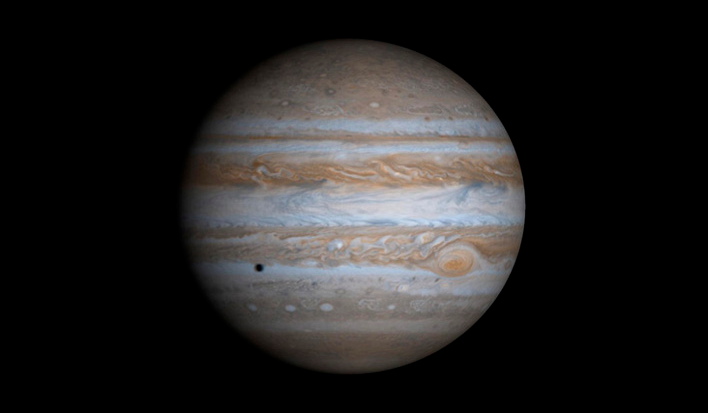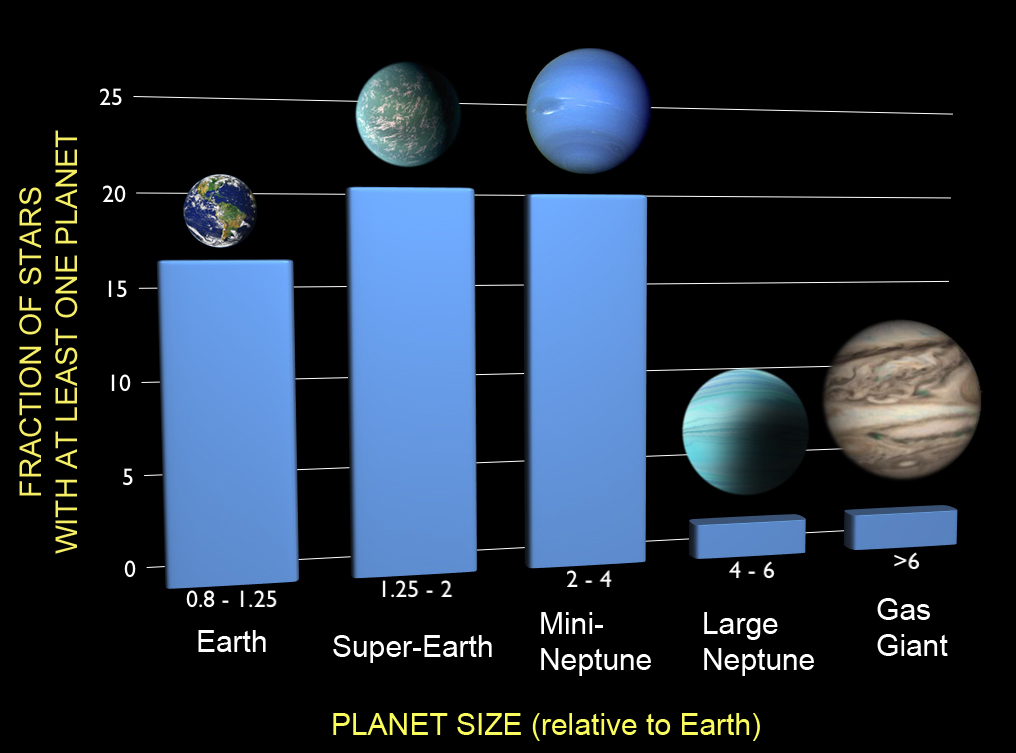Jupiter's Movements Made Way for Earth

There's something about our solar system that appears to be unusual. For some reason, most of our bigger planets are far away from our host star, while closer in are smaller, rocky worlds, including Earth itself.
This is not the case for many extrasolar systems that have been discovered. So-called "hot Jupiters" — huge gas giant planets that nestle close to their star — have been found in a few examples. In other instances, planets slightly bigger than Earth are so close to their stars as to be uninhabitable. Did our solar system once look like this, or did it start out somewhat differently?
As nobody was around to witness the forming of our solar system some 4.5 billion years ago, computer simulation is the next best means to unraveling this mystery. A new series of simulation scenarios suggests that Jupiter may have formed in a distant orbit, but temporarily invaded the orbital neighborhood of the present Earth before migrating back out. [The Strangest Alien Planets]
This would explain why NASA's planet-hunting Kepler space telescope has seen different types of solar systems around other stars, said lead researcher Konstantin Batygin, an assistant professor of planetary science at the California Institute of Technology.
"The new planets detected by Kepler orbit close to their stars with typical orbital periods shorter than 100 days and are more massive than Earth," Batygin said. "But the real interesting thing is the planets are enriched in hydrogen."
The presence of hydrogen in these planets implies that they collected it from the natal gas clouds in which the solar system was formed, he added.
"This is an important and stark contrast to our own inner solar system. The terrestrial planets are hydrogen-poor, which can be interpreted as pointing to a post-gas disk formation history," he said.
Breaking space news, the latest updates on rocket launches, skywatching events and more!
A paper on the subject, titled "Jupiter's decisive role in the inner Solar System's early evolution," was published in March in the journal Proceedings of the National Academy of Sciences.
Orbiting in gas
The sun and the planets, like other solar systems, formed from a vast collection of gas and dust. It is believed that cooling of the gas and the disappearance of the associated thermal pressure that holds the cloud against its own gravity caused the gas to collapse and form the sun.
Over time, dust collided and congealed into rocks and through collisions grew into the rocky cores of the planets of our solar system. Simultaneously, a cloud of gas persisted for at least a few million years, providing plenty of material for the gas giant planets to collect into atmospheres.
But there are questions with the formation theory. Previously, scientists thought the rocky planets closer to our star formed at the same time as the gas giant planets. So somehow, the gas had to be missing from the inner solar system but present in the outer solar system. The thinking was that the Sun's energy blew out the gas, making it inaccessible to reaches inside of Jupiter. But in other solar systems, why would the gas be present closer in?
Batygin's scenario — just one possible explanation — sees Jupiter being created first, then moving towards the sun due to tidal interactions with the gas. Next, Saturn is created and through a complex interplay between gravity and disk planet interactions, begins pulling Jupiter towards where the planets orbit today.
"Jupiter likely formed beyond the ice-line of the solar nebula, at least three times as far away from the Sun as the current Earth, or astronomical units (AU)," Batygin said. "It, however, likely came in as close as 1.5 AU at one point, before migrating back out to 5.2 AU."
Jupiter's movements in and out, he explained, "created havoc in the inner solar system." The gas giant flung planetesimals into the Sun and put others into unstable orbits, crashing into each other. If any super-Earths were formed at this time, they could have been destroyed as well.
But as Jupiter moved out of the vicinity, a few larger rocks in stable orbits remained, and the planet's immense gravity shielded other things from ricocheting into the inner solar system to disrupt the rocks. [Photos: Jupiter, the Solar System's Largest Planet]
Creating the rocky planets
The remaining planetesimals would now have been orbiting in an area with little gas. Over time, they would have collided with each other and created the inner planets that we see today — Mercury, Venus, Earth and Mars.
"This kind of nicely links the early migration of giant planets, and transcends the stage of interior planet formation and the formation of the terrestrial planets," Batygin said.
But this scenario needs two giant planets in the same disc, with the outer planet (Saturn, in our case) less massive than the inner planet (Jupiter). The combined gravity causes the planets to interact more strongly with the inner part of the gas than the outer part of the gas, allowing the migrations to take place and to clear the way for smaller planets.
More work will be needed, Batygin added, as this was based on only three high-fidelity simulations using planetesimal sizes of 1,000 kilometers, 100 kilometers and 10 kilometers. A future set of simulations will attempt to build the Solar System itself.
This story was provided by Astrobiology Magazine, a web-based publication sponsored by the NASA astrobiology program. Follow Space.com @Spacedotcom, Facebook and Google+.

Elizabeth Howell (she/her), Ph.D., was a staff writer in the spaceflight channel between 2022 and 2024 specializing in Canadian space news. She was contributing writer for Space.com for 10 years from 2012 to 2024. Elizabeth's reporting includes multiple exclusives with the White House, leading world coverage about a lost-and-found space tomato on the International Space Station, witnessing five human spaceflight launches on two continents, flying parabolic, working inside a spacesuit, and participating in a simulated Mars mission. Her latest book, "Why Am I Taller?" (ECW Press, 2022) is co-written with astronaut Dave Williams.



